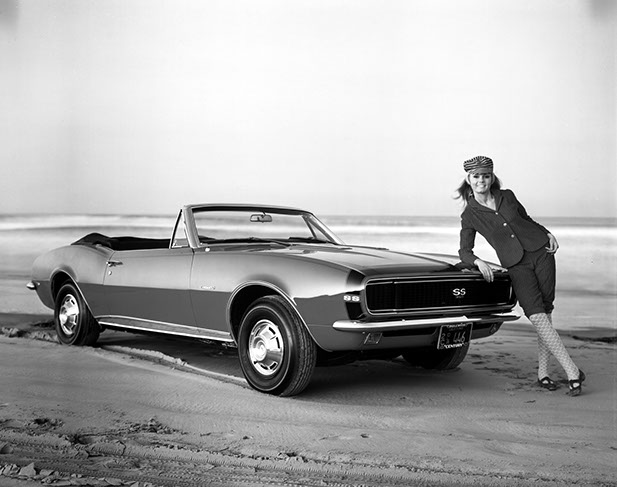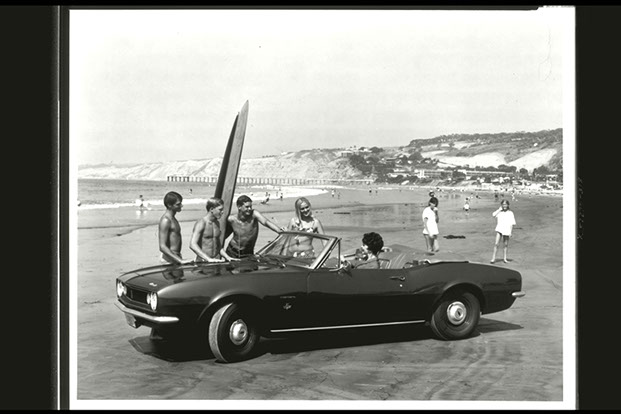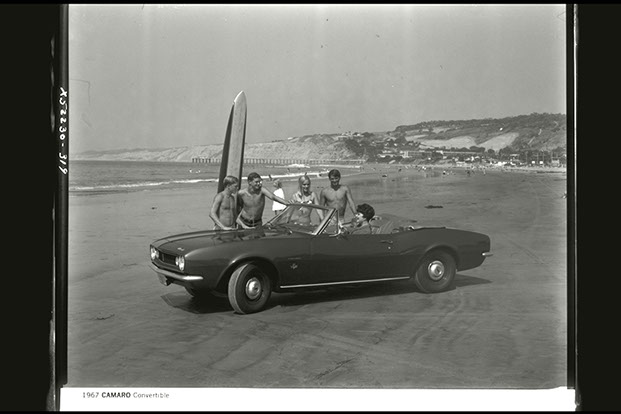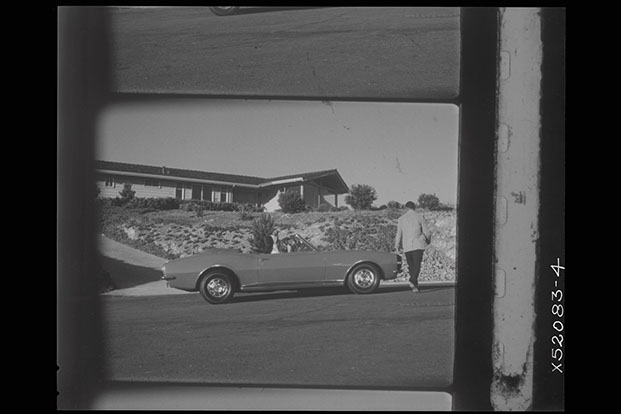
Reliability Audits, as they appear in the F-Car Pilot book were studies done under driving conditions by the General Motors Engineering Division based at the Proving Grounds. The Pilot Prototypes that were used in these audits were: #3, 4, 5, 10, 11, 13, 15, 16, 18, 25, 34, 37, 43, and # 46. These Pilot Prototypes are documented below.
#3 The 250 Six Cylinder Power-Glide Test Car Proving Grounds C. Caswell Engineering
#4 The 283 Eight Cylinder Test Car Proving Grounds C. Caswell Engineering
#5 The 230 Six Cylinder 3-Speed Test Car Proving Grounds C. Caswell Engineering
#10 The V-8 Smog Pump Test Car Proving Grounds C. Caswell Engineering
#11 The Longevity Mule Test Car Proving Grounds C. Caswell Engineering
#13 The Gear and Axel Test Car Proving Grounds C. Caswell Mfg-Gear/Axle
#15 The Crash Safety Test Car Proving Grounds C. Caswell Engineering
#16 The 327 Power-Glide Test Car Proving Grounds C. Caswell Engineering
#18 The Six Cylinder Smog Pump Test Car Proving Grounds C. Caswell Engineering
#25 The 327 3-Speed Test Car Proving Grounds C. Caswell Engineering
#34 The Six Cylinder Canadian Export Car G.M. Limited A.S. Evans Mfg-Canada
#37 The 350 4-Speed Test Car Proving Grounds C. Caswell Engineering
#43 The #1 Pilot Line Assembly Research Car Assembly Research F.R. Caffrey Mfg-Pilot
#46 The V-8 Canadian Export Car G.M. Limited A.S. Evans Mfg-Canada
These audits were conducted on-site at the General Motors Proving Grounds, as well as, off-site. It was important to keep this testing and audit process under wraps from the general public, because it was ongoing prior to the official announcement of the car to the press. The vehicles that stayed on-site were all testing vehicles for General Motors Engineering. The Supervisor in charge of these processes at the Proving Grounds was C. Caswell. A biography of him can be found on the Pilot Book Biographies page. These cars were tested through driving conditions that were very rigorous and extreme...then torn apart and checked for wear and reliability. New or different components were added or substituted…and the process began again. The idea was to create real word conditions that could possibly cause failure. These weaknesses would affect the bottom line through warranty and quality issues…and these issues were to be dealt with pre-production to the best of their abilities.
The Pilot Prototype vehicles that were used off-site were thought to be #5, 18, 25, and #37 on the West Coast route and #13, 34, 43, and #46 on the East Coast Route. Through research obtained from an interview with Paul King, an actual driver of the West Coast route…we were able to discern the necessity of off-site reliability audits. As a new product nears production, efforts to camouflage it on test trips taper off in a last minute rush to find and fix all remaining problems. He recalls the trip that led to the discovery, late in the Pilot Program, of the rear axle hop that would plague the Camaro throughout the first three years. Parts of the interview are focused on below:
“We had a fleet of Camaros on a Western trip, and I had the first Super Sport. We went down to a restaurant in L.A. for dinner. This was getting fairly close to production, and these may have been pilot-line cars. They were good-looking, they looked different, people knew they were different, and they attracted attention. The parking lot guys took the cars, and when we came out from dinner they were oohing and ahhing over this Super Sport. I obviously wanted to make a good show of leaving, so I peeled out onto Sunset Boulevard. It was a manual transmission job, which we hadn’t had many of until then, and I got into the damnedest power hop. I didn’t back off, and it was really bad. That got us busy working to fix the problem and led to the staggered shocks.
“That’s why we like the road trips, because you have a certain set of roads and you do certain things, but sometimes you drive around under unplanned, random circumstances, and every once in a while you’ll discover something …. Some combination of cornering, road surface and a limited-slip differential, for example, that creates a problem. We had not been aware of this problem until then.”
Through our research, we were able to ascertain that Paul was actually driving #37. It wasn’t the First Super Sport, but it was the First and Only Super Sport Convertible. Equipped with a 4-speed manual transmission, it is one of the most photographed Pilot Prototypes back in the summer of 1966.
There were two off-site reliability audits…West Coast Route and East Coast Route. The west coast route began at the General Motors Proving Grounds and ended in Los Angeles. The route consisted of driving historic Route 66 and the new Interstate Highway System. Four cars started the route with four drivers. It is thought that #5 and #37 were dropped off in Los Angeles and those drivers returned home with their notes driving as pairs in #18 and #25. Photos of the cars that were dropped off can be viewed below in settings that range from the Monterey Peninsula to Pismo Beach. The east coast route began at the General Motors Proving Grounds and the route consisted of driving to General Motors Limited in Oshawa, Ontario…then to General Motors Assembly Research…then back to the Proving Grounds. Four cars also started the route with four drivers. They simulated all required driving conditions and changed cars every hour, making notes of their findings at every stop. #34 and #46 were dropped off at G.M. Limited in Oshawa and those drivers became passengers of #13 and #43. The route then stopped at General Motors Research in Flint, Michigan where #43 was dropped off. With a full passenger list of four in #13, they returned to the General Proving Grounds together with their notes.
The choice of these particular builds was based upon their drivetrain configuration. Of these eight cars chose by Frank Beaulieu, all were unique compared to the others.
West Coast Route: 230 3-Speed Convertible
250 3-Speed Convertible
327 3-Speed Convertible
350 4-Speed Convertible
East Coast Route: 327 Power-Glide Convertible
230 Power-Glide Coupe
327 Power-Glide Coupe
283 4-Speed Convertible
These Off-Site Reliability Audits were conducted during the middle portion of July 1966. Among notable imperfections gleaned from these audits was the necessity of traction bars for the rear differential and cocktail shakers on convertibles. Also, notation should be taken of the use of all convertibles for the summer route through the Southwestern United States on the West Coast Route.
West Coast Route Pilot Reliability Photos








<
>
All of the Vehicles produced by the former General Motors Corporation at its long expunged Norwood, Ohio factory are all existing trademarks of the new General Motors Company. Any and all historical marks as used here are used for identification, description, illustrative, and educational purposes only. This site is not affiliated with General Motors Company.
By: Logan Lawson
Registrar Of WWW.PilotCarRegistry.com
Copyright 2014 Logan Lawson. All Rights Reserved.

